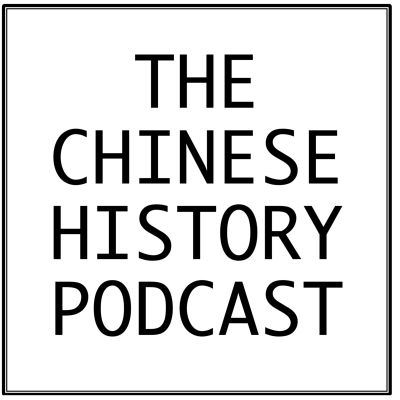We are a group of Chinese history PhD students looking to make Chinese history more accessible to the general public. Our podcast will cover a broad range of topics in Chinese history or topics related to Chinese history in both the premodern and the modern periods. Our content will be composed of both interviews with scholars and individually narrated episodes on selected topics.
https://thechinesehistorypodcast.podbean.com
episode 13: The Ming in the Southwest: Conquest, Rule, and Legacy
In 1381, Ming armies marched into Yunnan and Guizhou and within a year had deposed the Mongol Yuan's Prince of Liang, who had been enfeoffed there by the Yuan court. The Hongwu's emperor's decision to annex Yunnan and Guizhou and establish Ming administration there was unusual, for before the Mongols conquered it in the mid-1250s, the area had never been under the control of a China-based empire. It was more Southeast Asian in character than it was Chinese in character. Yet for decades, the scholarly community has neglected the study of the southwest. In this episode, Sean Cronan will discuss the Ming's rule in the region, how the early Ming court reshaped the interstate environment of Southwest China and Upper Mainland Southeast Asia, as well as some of the legacies that the early Ming left on the region.
Contributors
Sean Cronan
Sean Cronan is a Ph.D. student at the University of California, Berkeley. His work focuses on East and Southeast Asian diplomatic encounters from the thirteenth to eighteenth centuries, tracing the development of new shared diplomatic norms following the Mongol conquests of Eurasia, as well as how rulers and scholar-officials in the Ming (1368- 1644) and Qing Dynasties (1644-1911) institutionalized and challenged these new norms. He explores how ideas of multipolarity, regime legitimacy, and the makeup of the interstate order came under debate throughout the Mongol Empire, Ming China, the Qing Empire, Chosŏn Korea, Dai Viet (Northern Vietnam), Japan, the Ayutthaya Kingdom of Thailand, the Pagan Kingdom of Burma, and beyond. He works with sources in Chinese (literary Sinitic), Japanese, Thai, Burmese, Manchu, and Dutch.
Yiming Ha
Yiming Ha is a Ph.D. candidate in the Department of History at the University of California, Los Angeles. His current research is on military mobilization and state-building in China between the thirteenth and seventeenth centuries, focusing on how military institutions changed over time, how the state responded to these changes, the disconnect between the center and localities, and the broader implications that the military had on the state. His project highlights in particular the role of the Mongol Yuan in introducing an alternative form of military mobilization that radically transformed the Chinese state. He is also interested in military history, nomadic history, comparative Eurasian state-building, and the history of maritime interactions in early modern East Asia. He received his BA from UCLA and his MPhil from the Hong Kong University of Science and Technology.
Credits
Episode No. 13
Release date: July 31, 2022
Recording location: Los Angeles/Berkeley, CA
Transcript
Bibliography courtesy of Sean Cronan
Images
Cover Image: A Buddhist monastery in Xishuangbanna (Sipsongpanna), located in Yunnan at the border with Laos and Myanmar. Note the distinct Southeast Asian style architecture. In Ming times this area was called Cheli 車里 and a native official ruled here on behalf of the Ming court. Today it is classified as an autonomous region for the Dai/Tai ethnic group. (Image Source)
https://i.imgur.com/tn3BrKI.jpg
A 1636 Ming map of Yunnan, from the Zhifang dayitong zhi 職方大一統志. Due to the large file size, it cannot be uploaded here. Please click on the link above to view it. The yellow rectangle denotes the location of Kunming, the prefectural seat of Yunnan. Red squares represent major settlements.
Map of the Möeng Maaw Empire at its greatest extent in 1398. . Areas in red were either governed by a Sa clan appointee or had long been conquered and integrated into the Maaw administrative structure. Areas in yellow were seized by more recent conquest or held only loosely. Map courtesy of Sean Cronan. Please do not cite or circulate.
A Yuan seal granted to the native official of Cheli. (Image Source)
References
Daniels, Christian. “The Mongol-Yuan in Yunnan and ProtoTai/Tai Polities during the 13th-14th
Centuries.” Journal of the Siam Society, 106 (2018), 201-243.
Daniels, Christian and Jianxiong Ma, eds. The Transformation of Yunnan in Ming China: from the
Dali Kingdom to Imperial Province. Abingdon, Oxon: Routledge, 2020.
Fernquest, Jon. “Crucible of War: Burma and the Ming in the Tai Frontier Zone (1382-1454).”
SOAS Bulletin of Burma Research, 4:2 (2006), 27-90.
Giersch, Charles Patterson. Asian Borderlands: The Transformation of Qing China's Yunnan
Frontier. Cambridge, Mass.: Harvard University Press, 2006.
Herman, John E. Amid the Clouds and Mist China’s Colonization of Guizhou, 1200–1700. Cambridge, MA: Harvard University Asia Center, 2007.
Robinson, David M. In the Shadow of the Mongol Empire: Ming China and Eurasia. Cambridge:
Cambridge University Press, 2020.
Yang, Bin. Between Winds and Clouds: The Making of Yunnan (Second Century BCE to
Twentieth Century CE). New York: Columbia University Press, 2009.
